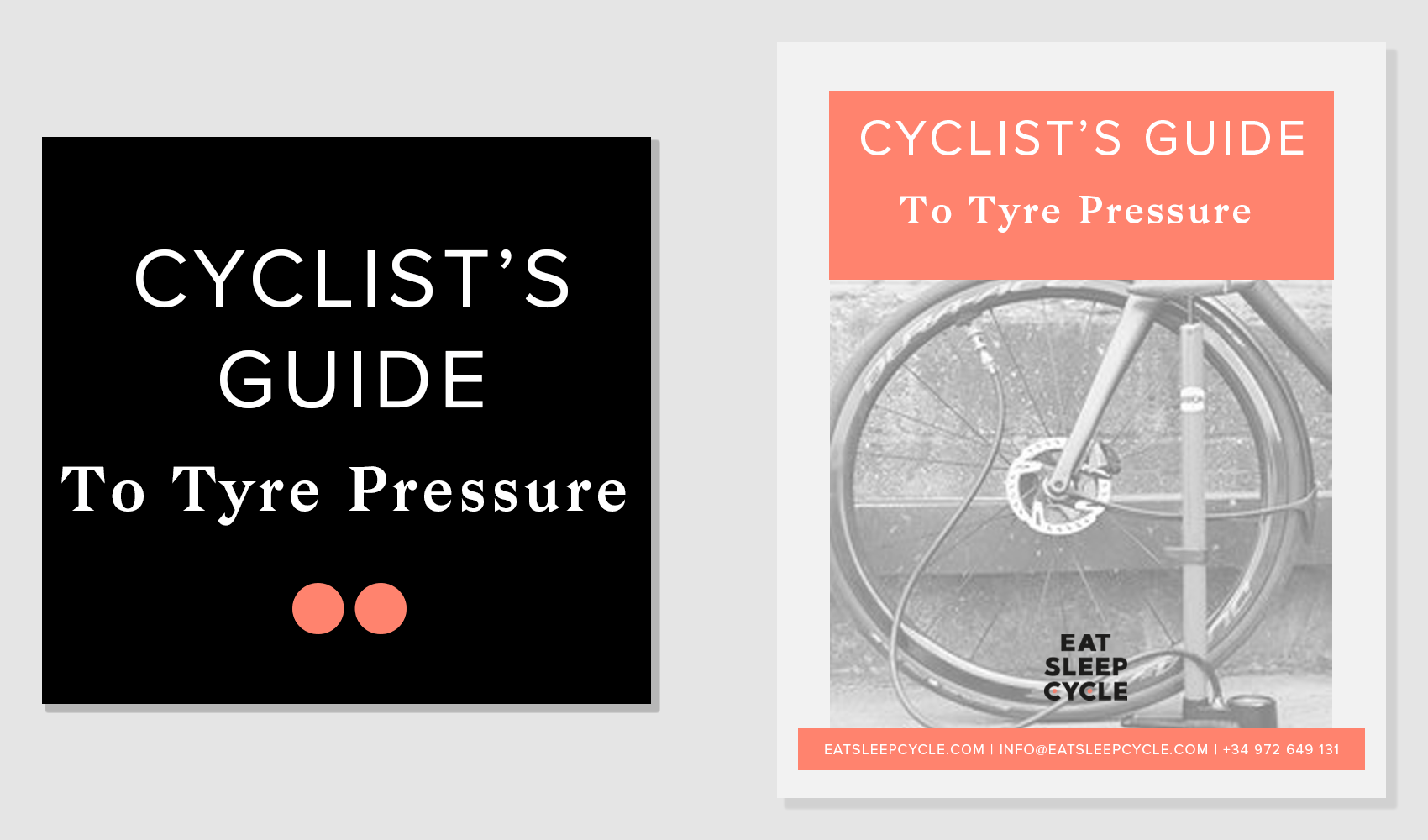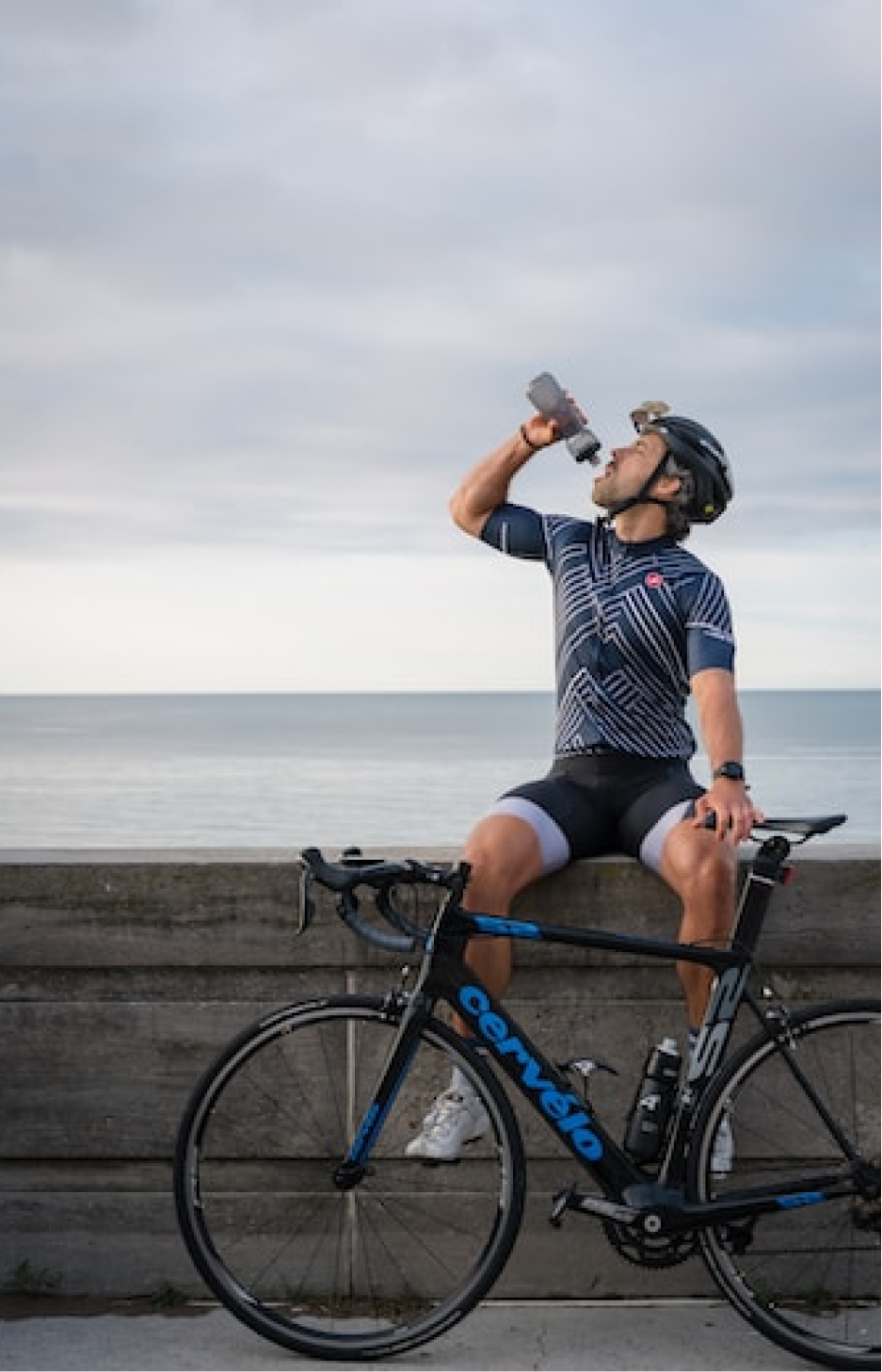The cheapest way to make your bike faster. Aficionados will know that the more sophisticated the tyre, the more knowledge the rider must have to get the most out of the tyre & enable it to perform at its best. As our tyres get wider & pressures get lower, chosing the correct tyre pressure for […]
The cheapest way to make your bike faster.
Aficionados will know that the more sophisticated the tyre, the more knowledge the rider must have to get the most out of the tyre & enable it to perform at its best. As our tyres get wider & pressures get lower, chosing the correct tyre pressure for a rider and bike has never been so important. Too high and you’ll feel every vibration of the road, get more punctures & risk tyre explosions. Too low & the tyre might collapse on a corner or pinch flat.
JP, distributor of René Herse tyres, sat down with the Eat Sleep Cycle team to bust some myths about tyres & help us guide our customers to the optimum tyre pressure for their set up & style of riding.
JP opens by telling us to forget the instructions on the tyre – the numbers serve a legal purpose to protect the tyre manufacturer against lawsuits. So, let’s go back to basics in our quest for optimum pressure.
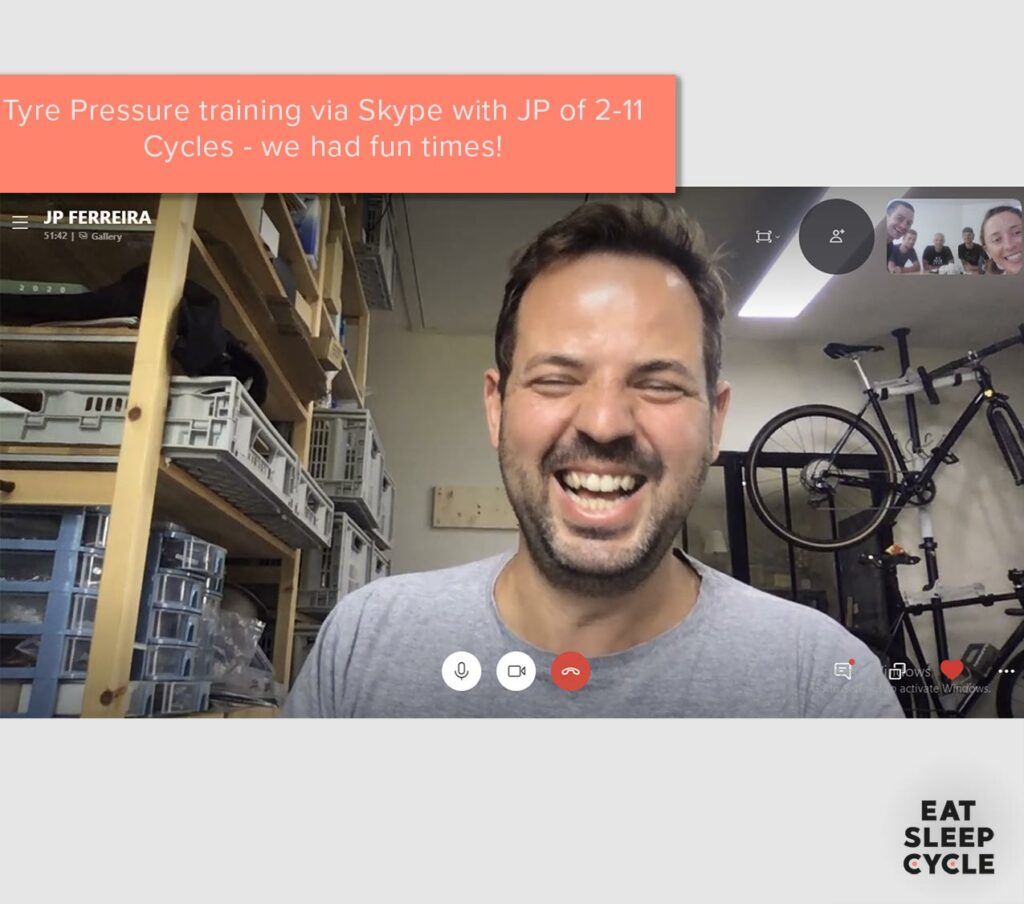 What is tyre pressure?
What is tyre pressure?
Tyre pressure is determined by the volume of air a tyre can contain & the weight of the system (bike, rider & kit). The volume of air a tyre can contain is determined by the size of the tyre & the size of the rim of the wheel. Over the last 30 years us cyclists have been taught to believe that the vibrations & noise of high pressures & thin tyres speeding over tarmac is fast. But if you stop & think about it, all the vibrations are wasted energy.
We need to re-learn what fast actually feels like – what something feels like & how a tyre performs under testing are really different. Fast is silent, fast is smooth & it follows that fast is actually alot more comfortable that the antiquated high-pressure, high-vibration feeling of ‘fast’.
What about aerodynamics?
This is a good question & it’s true that wide tyres can comprmise the aerodynamics for very fast paced rides and road racing conditions. Thus tyre width & pressure selection is about finding the perfect balance for you as an individual, based on what terrain you’ll be riding & what your priorities are on a bike. Note that bikes are evolving to take wider tires in account, so are rims and so on – aerodynamic bikes dialed in for wider tires are soon to be a reality.
Performance & Comfort
Never underestimate the influence of comfort on your performance. A rider who is comfortable on their machine can ride for longer & can put out more power – the more supple a tyre, the more comfortable it is & the better it performs. According to JP:
What’s called suspension losses is actually energy from the road/tyre interface dissipating in your own body as heat and costing you power. The rougher the terrain, the more you need “comfort” to ride faster.
A ‘new normal’ Tyre pressure for roadies
The professional peleton is catching on to the science & wheel manufacturer’s are developing wider rims capable of supporting tyres at lower pressures. A 23 mm tyre used to be standard for a road tyre. Now the majority of riders are running 25’s or 28’s & our workshop gets daily requests to fit the widest tyres that a frame can take. It will be the case in a few years that pro riders (prioritising aerodymanics) will be running 28’s and normal riders (prioritising comfort) will be running 30’s or 32’s on their road bikes. JP tells us:
The new generation of road wheels are much wider. For example, Enve 3.4AR wheels are 24mm inside width hookless rims, which make a 28mm tyre go up to 30mm in real life & recommend a pressure of 4.5 bar (65 PSI) for a rider weighing 80 kgs.
That is new, bonkers & very exciting.
Calculating your optimum Tyre Pressure
Luckily, there are some great tyre pressure calculators out there to do the complicated math for us. You’ll need some key pieces of informaiton to hand:
- Weight of the system (rider + bike + kit)
- Wheel diameter (650b/700c/26″)
- Tyre width (make sure you measure the actual width, not the width it says on the tyre)
- Weight distribution (the geometry of the bike – endurance, race, gravel etc)
Plug your information into one of these caluclators & away you go!
Silca Pro Tyre Pressure Calculator
Sram AXS Tyre Pressure Calculator
These calculators give a good reference point to the pressure which will work best for you however facotr in a variance of +/- .3 bar, depending on rider preference & terrain. For example, if you’re planning a ride on super smooth tarmac, add up to an extra .3 bar to your recommended pressure. If you’re heading off-road on the same set up on rough terrain, go up to .3 bar lower. It’s all about smoothing out the vibrations & minimising rolling resistance.
The Difference Between Front & Rear Tyre Pressure
JP teaches us about the importance of you, the rider, in tuning tyre pressure:
Whilst some calculators will give a recommended front & rear pressure coming mostly from bike geometry guess, this is where you, the rider comes in to fine tune things. Using the Tyre
Pressure App, only use the rear wheel result. The front tyre should be 0.9 – 0.95 (5% – 10% less) of the pressure of the rear. The difference depends on your riding style. If you’re someone who likes to climb out of the saddle a higher pressure (0.95 of the rear) makes sense, if you like to stay seated go for something a little softer – 0.9 of the rear.
What about Tubeless Tyres?
There is a common misconception that running tubeless means you should run a lower pressure. This is not the case. Tubeless set up allows a lower pressure but the ideal pressure a rider should run is still determined by their weight and air volume of the tyre. Tubeless is great for lighter riders who need to run a lower pressure than a standard clincher would allow. Tube type setups tend to work best for tyres up to 35 mm, Tubeless starts to come into its own with tyres over 35 mm.
JP also recommends not using tubeless setups over 4 bars (60 PSI) – this is also the recommendation of the René Herse brand:
Above 4 bars, sealants don’t work so well on punctures anyway and tend to spray bike and rider in action. Also if you roll thinner tires you’re probably riding on smooth roads an looking for sporty and fast rides… Some good latex tubes from Silca will give you the best experience.
What about Rolling resistance?
A durable tire with a sturdy casing and a high level of puncture resistance, will not roll as well as a tire that’s very compliant, light, and more delicate of construction. A wider tire will roll better and have better grip compared to a very narrow tire, but will suffer at high speeds due to aerodynamic drag.
- The most efficient set up in terms of rolling resistance is a latex tube paried with a supple tyre
- Next up is tubeless with a small amout of sealant.
- Standard tubes & standard clinchers are the slowest.
Be aware that a latex tube & supple tyre will require pumping every day – pressure is lost fairly quickly, so whilst this set up might be perfect for a one day race, it’s not be the most practical for a multi-day adventure when you can’t access a track up every morning.
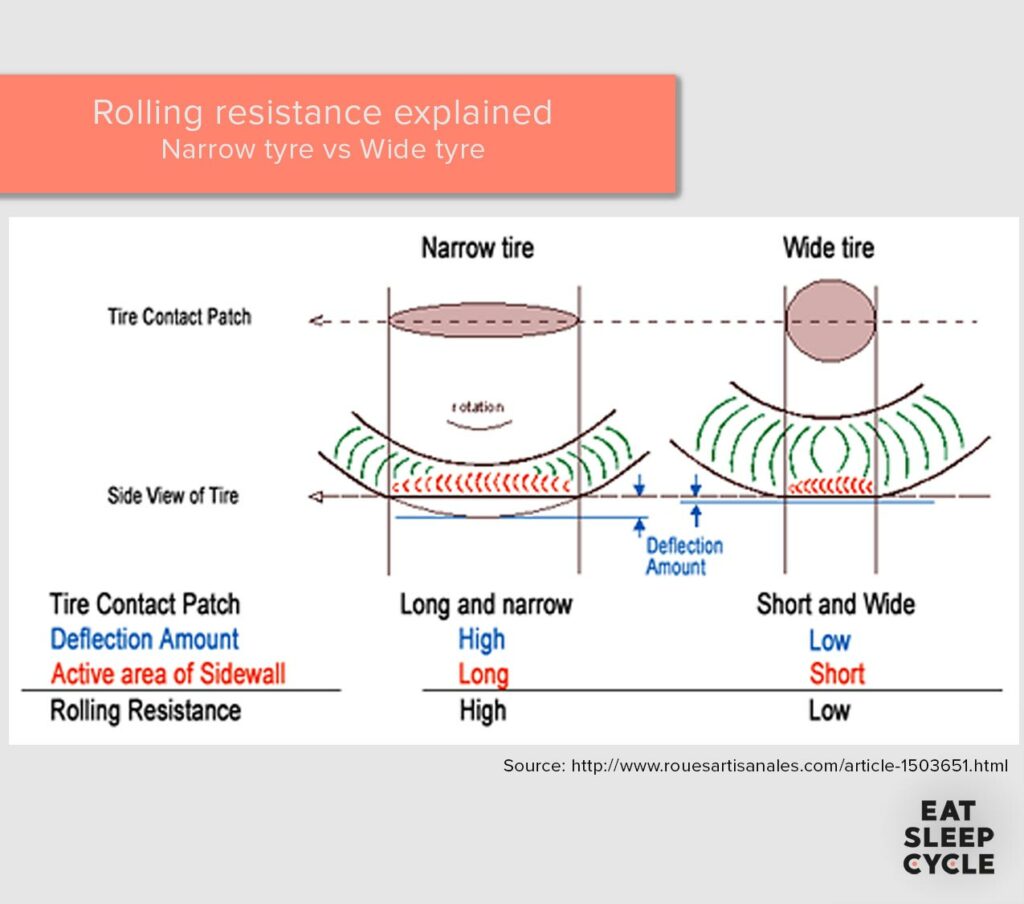 Great Pumps = Accurate Pressure
Great Pumps = Accurate Pressure
Not all pumps offer a high level of accuracy & the lower the pressure you want to run, the more sophisticated your tool needs to be. Look for a pump with a dial that is easy to read. Consider two pumps – one for tyres you like to run at a higher pressure (anything over 60 psi) & one for your low pressure tyres (anything under 60 psi). Make sure that the pressure dial is easy to read & that you can read the same pressure every time regardless of what angle you’re seeing it at. Make sure that your pump repeatedly achieves the same results – ask your local workshop to check your tyre pressure too.
Check out this Silca Pista Floor Pump if you’re looking to upgrade your tools.
René Herse Tyres
René Herse are leading the field in producing supple tyres which offer supreme comfort & performance. The tyres are handmade in small quantities in the Panaracer factory.
They are available in three sizes:
- 26″
- 650b
- 700c
They are available with four different casings:
- Standard – this is the ‘entry-level’ René Herse, but there’s nothing entry-level about them!
- Extra-light – this is an exclusive polyester casing unique to René Herse. The 28 mm tyre comes in at just 220g.
- Endurance – this features the extra-light casing with additional density & a puncture protection layer
- Endruance Plus – special tougher casing material, for even more protection. Perfect for adventure riding & truly epic journey’s where punctures must be avoided at all costs.
They are available in multiple widths from 26 mm road tyres to 55 mm mtb/gravel tyres & with a choice of all-road slicks or dual-purpose knobbies depending on the terrain you’re seeking.
Look out for the first generation of René Herse tyres with noise cancellation technology…!
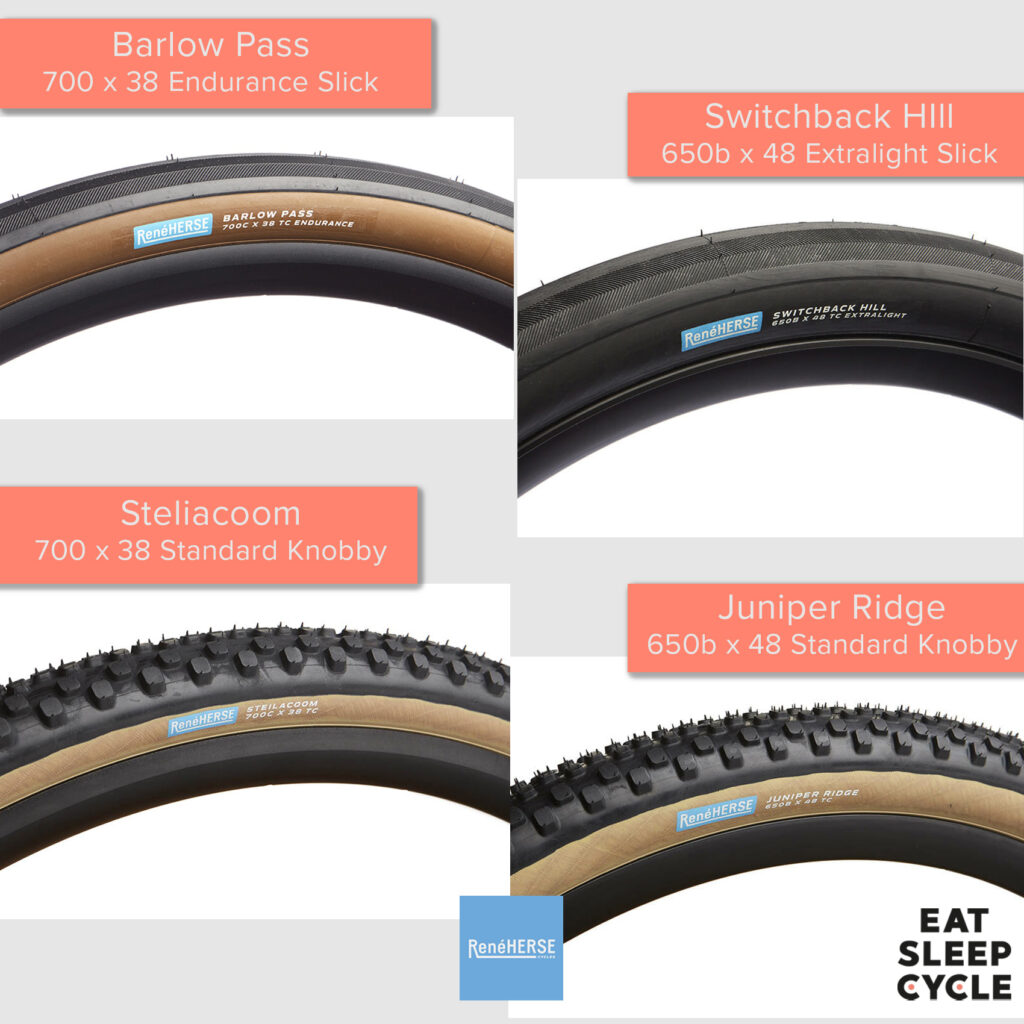 René Herse Stockist
René Herse Stockist
We’re proud to stock René Herse tyres – drop by our Hub & we’ll help you to find your perfect tyre (& pressure!) or browse our René Herse tyres online.
P.S. Enjoyed this blog? Why not sign up to join our newsletter to receive regular updates on our latest tours!

